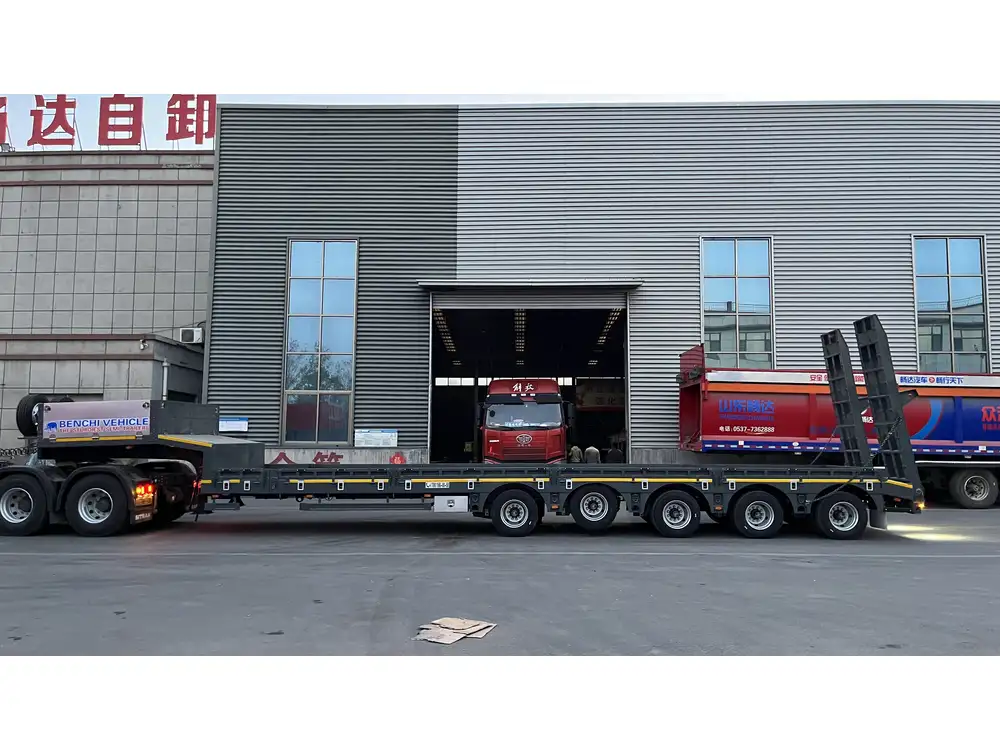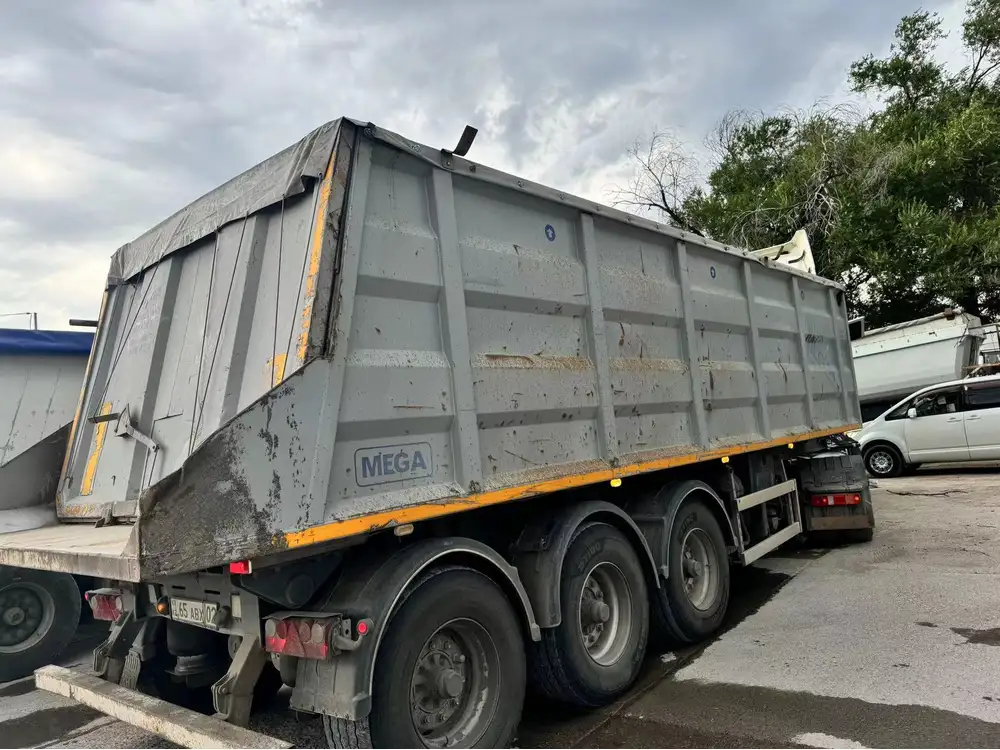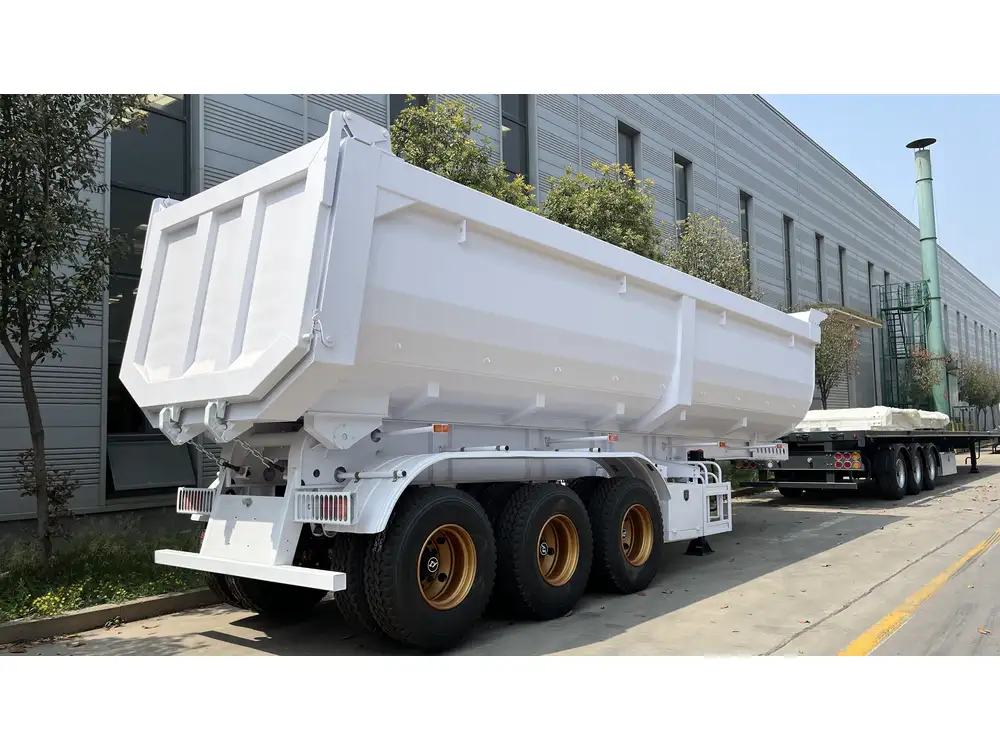As the demand for sustainable and efficient transportation solutions grows, Compressed Natural Gas (CNG) has emerged as a viable alternative to traditional diesel fuels. At CarMax Vehicle, we understand the critical importance of CNG tank certification in ensuring the safety, reliability, and compliance of semi-trailers equipped with CNG systems. This comprehensive guide delves into the intricacies of CNG tank certification, offering valuable insights for manufacturers, operators, and stakeholders in the transportation industry.
Understanding CNG Tank Certification
CNG tank certification is a rigorous process that verifies the safety, performance, and compliance of compressed natural gas storage systems used in vehicles. This certification ensures that CNG tanks meet stringent industry standards and regulatory requirements, safeguarding both operators and the environment.
Importance of CNG Tank Certification
- Safety Assurance: Ensures tanks can withstand high-pressure conditions without compromising structural integrity.
- Regulatory Compliance: Meets national and international standards, facilitating market access and operational legality.
- Performance Optimization: Guarantees efficient storage and delivery of CNG, enhancing vehicle performance and fuel economy.
- Environmental Impact: Promotes cleaner energy use, reducing greenhouse gas emissions and dependency on fossil fuels.

Certification Standards and Regulations
CNG tank certification adheres to various international and national standards designed to maintain uniformity and safety across the industry. Understanding these standards is essential for manufacturers aiming to achieve certification.
Key Standards for CNG Tank Certification
| Standard | Description | Governing Body |
|---|---|---|
| ISO 11439 | Specifies safety requirements for CNG tanks used in road vehicles. | International Organization for Standardization |
| SAE J2579 | Outlines testing procedures for CNG cylinders. | Society of Automotive Engineers |
| DOT-4CB | U.S. Department of Transportation standard for Type IV CNG cylinders. | U.S. Department of Transportation |
| ADR 203 | European agreement on the uniform provisions for the approval of CNG tanks. | United Nations Economic Commission for Europe |
Key Regulatory Bodies
- International Organization for Standardization (ISO): Provides globally recognized standards to ensure quality and safety.
- Society of Automotive Engineers (SAE): Develops industry-specific guidelines and testing protocols.
- U.S. Department of Transportation (DOT): Regulates transportation modes and safety standards in the United States.
- United Nations Economic Commission for Europe (UNECE): Establishes international regulations for vehicle components, including CNG tanks.

The Certification Process
Achieving CNG tank certification involves a series of methodical steps that ensure the tanks meet all necessary safety and performance criteria. Below is a detailed overview of the certification process.
Step 1: Design and Engineering
- Material Selection: Choose high-strength materials such as carbon fiber composites or steel that can withstand high-pressure environments.
- Structural Design: Incorporate safety features like pressure relief devices, burst disks, and reinforcement elements to enhance durability.
- Compliance Integration: Ensure design aligns with relevant standards and regulatory requirements from the outset to streamline the certification process.
Step 2: Prototyping and Testing
- Prototype Development: Create initial prototypes based on design specifications for preliminary testing.
- Hydrostatic Testing: Evaluate the tank’s ability to withstand high pressures by filling it with water and applying pressure beyond operational levels.
- Burst Testing: Determine the point at which the tank fails under extreme conditions, ensuring it remains within safe limits.

Step 3: Documentation and Submission
- Technical Documentation: Compile detailed reports on design, materials, and testing procedures, providing comprehensive evidence of compliance.
- Certification Application: Submit all necessary documentation to accredited certification bodies for evaluation and approval.
Step 4: Certification and Quality Assurance
- Third-Party Evaluation: Independent auditors assess the tank’s compliance with applicable standards through rigorous inspections and tests.
- Continuous Monitoring: Implement quality assurance protocols to maintain compliance throughout the manufacturing process and the tank’s lifespan.
- Renewal and Recertification: Adhere to periodic recertification requirements to ensure ongoing compliance with evolving standards.
Benefits of CNG Tank Certification
Securing CNG tank certification offers multifaceted advantages that extend beyond mere compliance, impacting operational efficiency, marketability, and sustainability.

Enhanced Safety
Certified CNG tanks provide assurance against potential hazards such as leaks, explosions, and structural failures. This safety assurance protects not only vehicle operators but also the general public and the environment.
Market Access and Credibility
Certification opens doors to various markets by meeting international and regional regulatory requirements. It also enhances the manufacturer’s credibility, fostering trust among customers and partners.
Economic Advantages
- Cost Savings: Reduced risk of accidents and associated liabilities lower overall operational costs.
- Increased Demand: Certified products are more attractive to environmentally conscious consumers and businesses, driving sales and revenue growth.
- Operational Efficiency: Optimized tank performance leads to better fuel economy and reduced maintenance expenses.

Environmental Stewardship
By promoting the use of cleaner natural gas, certified CNG tanks contribute to the reduction of greenhouse gas emissions and the overall environmental footprint of transportation operations.
Key Components of a Certified CNG Tank
Understanding the components that constitute a certified CNG tank is crucial for manufacturers aiming to achieve and maintain certification.
Structural Components
- Cylinder Body: The main chamber where CNG is stored, designed to handle high-pressure conditions.
- End Caps: Secure the cylinder ends and provide attachment points for valves and other fittings.
- Protective Wraps: Composite layers that offer additional strength and protection against external impacts.

Safety Features
- Pressure Relief Devices: Prevent over-pressurization by releasing excess gas in a controlled manner.
- Burst Disks: Designed to rupture at specific pressures, serving as a fail-safe mechanism during extreme conditions.
- Connection Valves: Ensure secure and leak-proof connections between the tank and fueling systems.
Auxiliary Systems
- Pressure Gauges: Monitor the internal pressure levels, providing critical information for safe operation.
- Vent Lines: Facilitate the controlled release of gas during emergency situations or maintenance activities.
- Mounting Hardware: Secure the tank within the vehicle, ensuring stability and minimizing movement during transport.
Compliance and Quality Assurance
Maintaining compliance throughout the production and operational phases is essential for sustaining certification. Implementing robust quality assurance measures ensures that CNG tanks consistently meet the required standards.

Quality Control Measures
- Material Inspection: Verify the integrity and suitability of materials used in tank construction through rigorous testing methods.
- Dimensional Accuracy: Ensure that all components adhere to precise measurements and tolerances to maintain structural integrity.
- Non-Destructive Testing (NDT): Utilize techniques such as ultrasonic testing, radiography, and dye penetrant inspections to detect internal and surface defects without compromising the tank’s integrity.
Documentation and Traceability
Maintaining detailed records of the manufacturing process, materials used, and testing results is vital for traceability and accountability. This documentation supports certification efforts and facilitates audits by regulatory bodies.
Continuous Improvement
Adopt a proactive approach to quality by continuously evaluating and enhancing manufacturing processes, incorporating feedback from testing and certification outcomes, and staying abreast of advancements in materials and technologies.

Innovations in CNG Tank Technology
The evolution of CNG tank technology is driven by the need for improved safety, efficiency, and environmental sustainability. At CarMax Vehicle, we prioritize innovation to stay ahead in the competitive market.
Advanced Composite Materials
- Carbon Fiber Composites: Offer a superior strength-to-weight ratio, reducing overall tank weight and enhancing fuel efficiency.
- Hybrid Composites: Combine different materials to optimize performance characteristics, such as impact resistance and flexibility.
Enhanced Safety Mechanisms
- Smart Sensors: Integrate sensors to monitor pressure, temperature, and structural integrity in real-time, enabling proactive maintenance and risk mitigation.
- Improved Venting Systems: Develop more efficient venting systems that ensure rapid and controlled release of gas in emergencies.

Modular Design
- Scalability: Design tanks with modular components that can be easily adapted to different vehicle sizes and requirements.
- Ease of Installation: Simplify the installation process, reducing downtime and facilitating quick replacements or upgrades.
Regulatory Landscape and Future Trends
The regulatory environment surrounding CNG tank certification is dynamic, with ongoing developments aimed at enhancing safety and environmental outcomes. Staying informed about these changes is crucial for manufacturers to maintain compliance and capitalize on emerging opportunities.
Emerging Regulations
- Stricter Emission Standards: Governments are implementing more stringent emission regulations, necessitating the adoption of cleaner fuel alternatives like CNG.
- Enhanced Safety Protocols: New safety guidelines are being introduced to address evolving risks and incorporate technological advancements in tank design.

Future Trends
- Integration with Renewable Energy Sources: Combining CNG with renewable energy systems to further reduce the carbon footprint of transportation.
- Digitalization: Leveraging digital technologies for better monitoring, maintenance, and management of CNG storage systems.
- Global Standard Harmonization: Efforts to unify international standards, facilitating easier market entry and reducing compliance complexity.
Choosing the Right CNG Tank Manufacturer
Selecting a reputable manufacturer is paramount to ensuring the quality and safety of CNG tanks. CarMax Vehicle stands out as a leader in the field, offering state-of-the-art solutions tailored to meet diverse transportation needs.
Why Choose CarMax Vehicle?
- Expertise and Experience: Decades of experience in manufacturing high-quality semi-trailers and CNG systems.
- Innovation-Driven: Commitment to integrating the latest technologies and materials in tank design and production.
- Comprehensive Support: Providing end-to-end support from design and certification to installation and maintenance.
- Compliance Assurance: Ensuring all products meet or exceed industry standards and regulatory requirements, facilitating smooth certification processes for clients.

Key Considerations When Selecting a Manufacturer
- Certification Credentials: Verify that the manufacturer holds all necessary certifications from recognized bodies.
- Quality Assurance Practices: Assess the robustness of the manufacturer’s quality control and assurance protocols.
- Customization Capabilities: Ensure the manufacturer can tailor solutions to specific operational needs and vehicle configurations.
- After-Sales Support: Evaluate the availability and quality of support services, including maintenance, training, and troubleshooting.
Conclusion
CNG tank certification is a vital component in the transition towards cleaner and more efficient transportation solutions. At CarMax Vehicle, we are dedicated to providing certified, high-performance CNG tanks that meet the highest standards of safety and reliability. By understanding the certification process, adhering to stringent standards, and embracing innovative technologies, we empower our clients to achieve operational excellence and environmental sustainability.
Frequently Asked Questions

1. What is the typical lifespan of a certified CNG tank?
A certified CNG tank typically has a lifespan of 15 years, depending on usage, maintenance practices, and adherence to safety protocols. Regular inspections and proper maintenance can help extend the tank’s operational life.
2. How often do CNG tanks need to be recertified?
Recertification frequency varies by region and standard but generally occurs every 5 years. It is essential to comply with local regulations and perform timely inspections to maintain certification and ensure ongoing safety.
3. Can existing semi-trailers be retrofitted with certified CNG tanks?
Yes, many existing semi-trailers can be retrofitted with certified CNG tanks. It is crucial to work with experienced manufacturers and certified installers to ensure the retrofit meets all safety and regulatory requirements.

4. What are the main differences between Type I, II, III, and IV CNG tanks?
- Type I: Made entirely of steel, offering robustness but higher weight.
- Type II: Steel liner with a composite overwrap, balancing strength and weight.
- Type III: Aluminum liner with a composite cover, offering lighter weight and corrosion resistance.
- Type IV: Fully composite tanks with no metal liner, providing the lightest option with high strength.
5. What measures are in place to ensure the safety of CNG tanks during accidents?
Certified CNG tanks incorporate multiple safety features, including pressure relief devices, burst disks, and robust structural designs. Additionally, modern tanks are equipped with sensors and advanced monitoring systems to detect and respond to potential risks in real-time.



